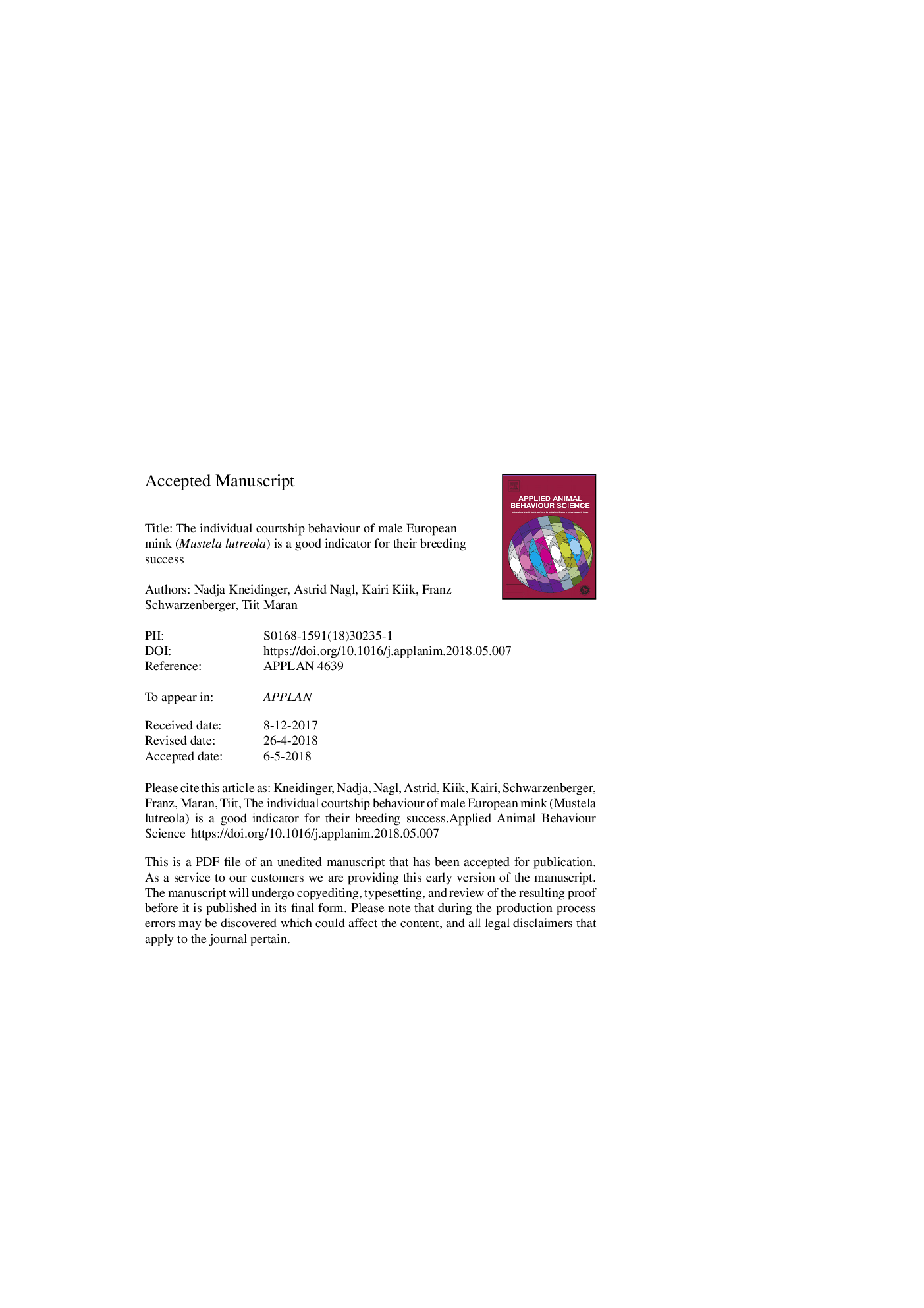| Article ID | Journal | Published Year | Pages | File Type |
|---|---|---|---|---|
| 8882720 | Applied Animal Behaviour Science | 2018 | 32 Pages |
Abstract
Conservation breeding of the critically endangered European mink (Mustela lutreola) is a challenge, because the genetically prioritised breeding pairs often fail to mate during the staged breeding attempts. For this study the courtship and mating behaviour of 33 males and the response behaviour of 28 females was observed and recorded throughout two breeding seasons at Tallinn Zoo using an ethogram. The behavioural patterns of the male European mink differed significantly depending upon their previous reproductive success and the outcome of the breeding attempt. “Clucking”, “flehmen”, “chase”, “anal drag”, “neck bite” and “mounting” were observed significantly more often among males that sired a litter during the study (“breeding males”) and during attempts that ended with copulation. More than half (61%) of the males were “non-breeding males”: they never sired a litter or copulated with a female. Females “chirped” significantly less often in attempts with “non-breeding males”. The male “clucking” sound was the best indicator to predict 1) a males ability to sire a litter and 2) whether a breeding attempt would end with copulation. The absence of species-specific courtship and mating behaviour in the “non-breeding males” threatens the conservation goal to maintain the genetic heterozygosity of the captive population. From a practical point of view, behavioural indicators could be used as a potential screening method for identifying successful future breeders. In an experimental setup, males were presented with scent cues from an oestrous female but without the opportunity for direct contact. In this experimental context 64% of “breeding males” responded with “clucking” and also presented “flehmen”, “rubbing” and “approach to the female/her nest box door” significantly more often than the “non-breeding males”.
Keywords
Related Topics
Life Sciences
Agricultural and Biological Sciences
Animal Science and Zoology
Authors
Nadja Kneidinger, Astrid Nagl, Kairi Kiik, Franz Schwarzenberger, Tiit Maran,
